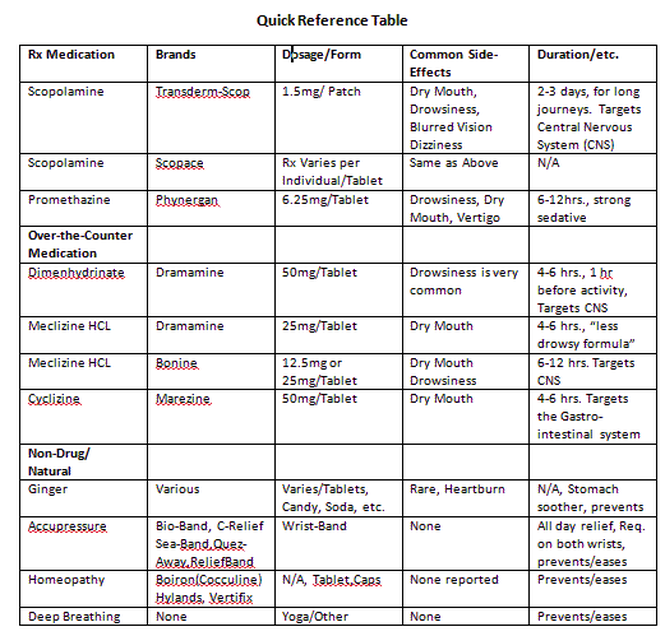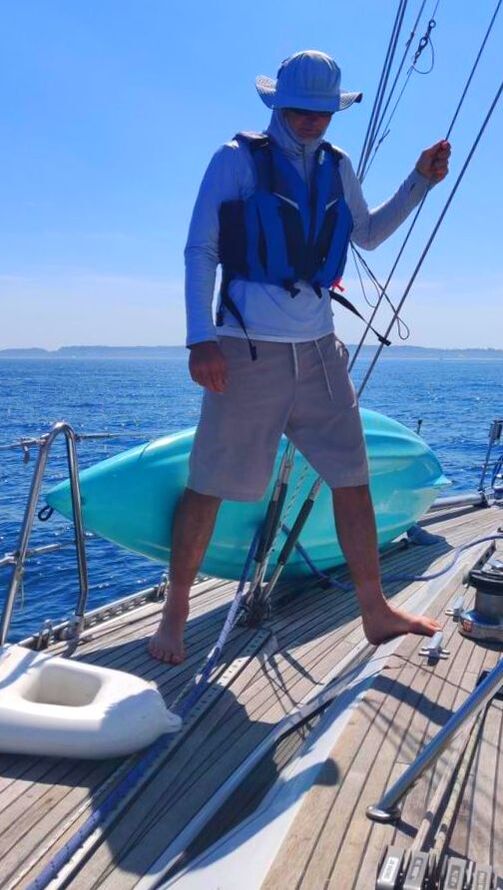|
The other day I was checking up on the Volvo Ocean around the world sailboat race and read the top story on their website, “Sickness and Slamming Take Their Toll.” The fleet sailed into heavy weather inside the South China Sea and the bumpy conditions were taking a toll on the stomachs of several crew members aboard the Open 70 sailboats. Reading quotes like “Down below looks like a war zone. Several people have been sick already, and the rest just keep swallowing” and “Today I had a hint of seasickness for the first time ever” prompted me to examine that time honored tradition of avoiding the Binnacle List (traditionally, the sick list posted near the binnacle for the use of the officer of the deck containing the names of men unable to report for duty). Ninety percent of all people suffer from some type of motion sickness during their lifetimes. Sea-sickness is truly an international debility. You might hear mal de mer or nauseeux aboard a French frigate. If you were consigned to a Spanish Galleon on the high seas, the word mareado might apply if you were “under the weather on the leeward rail”. And my personal favorite, seekrank, the German word for seasick, says it all. However you say it, “gastrointestinal distress”, “nauseogenisis”, “travel travail”, “feeling green” and its potential follow-up act “feeding the fish”, “gastric emptying”, “donating your breakfast to Neptune” or “losing your lunch”, being seasick is no fun. But there is hope. Dozens of prescribed, over-the-counter, and natural remedies are available in the US. The trick is to find your panacea before you are in a pickle. Therefore early research and self-testing are vital days or weeks before one can confidently embrace the briny deep. Some preventatives will work for some people and not others and with varying degrees of effectiveness. Medications should be explored in advance either by ingestion or research and side-effects should be noted. For example, last summer one of my sailing students downed an antiemetic (drugs effective against vomiting and nausea) the morning of her lesson without previously “testing” it. By 9 a.m. she was experiencing a rare side-effect from the medication; moderate to severe dizziness. She was “seasick” even before stepping on the dock and was relegated to her car to sleep off the effect while her husband enjoyed a beautiful day sailing on the bay. Motion sickness (a.k.a. kinetosis) is a conflict between your senses. The vestibular system, located in the inner ear, contributes to balance and the sense of spatial orientation. Kinetosis occurs when the vestibular system doesn’t agree with what is visually sensed, fouling-up the central nervous system (CNS) and nausea, fatigue and dizziness ensues. If the symptoms aren’t relieved the body may think, in theory, it has been poisoned and jettisons its contents. It reminds me of an ol’ truism, “If your systems are out of whack, your meals may come back.” Below (see Quick Reference Table) is a table of the most common state-side treatments for seasickness. Note that most of the antiemetics in the table contain an antihistamine which frequently causes drowsiness and dry mouth. Dry mouth is usually mild and tolerable. An extreme few find it quite severe and require an alternative form of treatment. For most, sucking on a hard candy will counteract that parched palate feeling. Again, the degree of drowsiness should be measured before departure. Feeling sleepy or useless under way is frustrating for all parties aboard. Over the years, the military has studied the threat of throwing up among their young, healthy but seasick recruits. In general, the research proved the medications listed in the table were the most effective with the least side-effects. The Coast Guard motto is Semper Paratus (Latin for "Always Ready" or "Always Prepared") So it isn’t surprising that they concocted the“Coast Guard Cocktail”, a mixture of promethazine, a strong sedative that quells nausea, and ephedrine, a stimulant, taken to counteract the sedation caused by the promethazine…whatever it takes to keep your sea-legs for 20 hours in 20 foot seas on a 44 foot cutter. If you don’t want to go “military style” there is always the “natural” way. Both ginger root and acupressure are becoming popular substitutes to preventing or easing seasick stomachs. In the past I have downed a ginger ale or two prior to sailing into heavy weather just to be on the safe side. Unfortunately, many ginger ales on the market today do not contain "real" ginger. Smooth Sailing, a beverage advertised to“sooth and settle the stomach naturally” contains ginger. Most people take ginger in capsules form, many reporting fewer symptoms of nausea and vertigo. Research has shown that certain compounds found in ginger may influence gastrointestinal function and noted ginger to be more effective than placebo for treating nausea caused by seasickness. It doesn’t hurt to keep some type of ginger product aboard just in case. Ginger snaps and soda don’t go to waste on our boat weather it is sailing or not. Another “natural” cure for nausea that has been gaining in popularity over the last decade is the acupressure wrist-bands. With the help of an elastic or adjustable wrist band a plastic button applies slight pressure on a point just on the inside of the wrist, called the Nei-Kuan point. Here the signals to the brain that cause seasickness are blocked. One band must be worn on each wrist to be effective and can be put on before departure or during the trip. The acupressure wrist bands have no side-effects and are appropriate for adults and children. In our ASA/Charter office in Santa Cruz there is usually someone talking about how the wrist-bands saved them or their crew from another “gastric-disaster.” Like wrist-bands, homeopathic remedies are big on the market and affect everyone differently. Trial and error, trial and error. Developing sea-legs, aka “vestibular rehabilitation,” may take some time. Don’t make things worse from the get-go. There are many factors that contribute or accelerate the onset of seasickness or seekrank, if you will. Avoiding or eliminating these factors before or during your voyage can greatly decrease or prevent the storm in your stomach: get plenty of rest, don’t eat greasy or acidic foods but don’t sail on an empty stomach either, drink plenty of water before and during your voyage, avoid alcoholic beverages, avoid diesel fumes, stay busy but avoid going below, avoid looking through binoculars, and don’t read. Following these tips, conducting a little research and experimenting with natural or traditional medication before setting sail should help you stay off the “Binnacle List” for good. 
0 Comments
|
AuthorA UCSC graduate in Marine Biology, Keith holds a 100 ton USCG Capt. License and is an ASA/US sailing certified instructor. Archives
March 2022
Categories |

 RSS Feed
RSS Feed